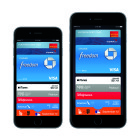In years past, many enterprises held onto cash for as long as possible so said cash would gain interest while sitting in the bank. When interest rates approached something like 10% or even 5%, this was a good idea. Not so anymore. Interest rates have remained near zero for the past five years, which means that piles of cash aren’t getting the same return as they once did. Enter dynamic discounting—a relatively new method of early payment discounting—that can save companies money and provide suppliers with a more secure monetary position all at the same time.
Why Dynamic Discounting is a Good Idea
As of September 16, the six-month LIBOR rate—the most common benchmark for interest rates—was 0.33%. Money market accounts, which are another common way to gain a return on free cash, sat at 0.39% APY, also as of September 16. These interest rates are less than half of a percent, which means that holding onto cash for an extended period of time is no longer the smart investment it once was.
Dynamic discounting, on the other hand, can generate returns approaching the annualized return on investment of 2/10 net 30 early payments, which is up to 37%. Compared to the LIBOR rate and money-market interest, dynamic discounting returns can approach a whopping 11,112% higher than the LIBOR and 9,387% higher than the APY of a standard money-market account. The best part of these returns is that a dynamic discounting program is basically risk free. It’s not an investment account, so there’s no worries about losing money in the market, and it doesn’t even involve borrowing any money. Truly, dynamic discounting is one of the best ways to leverage cash in today’s market.
What is Dynamic Discounting?
Everyone’s familiar with traditional early payment discounts. Typically, suppliers will offer something like 2/10 net 30 or 2/15 net 60, etc. The problem with traditional discounting is that there are no discounts available once you cross beyond the early payment threshold, which means there’s no incentive to try to speed payment between days 11 and 30 (or 45, or 60, etc.).
With dynamic discounting, on the other hand, payment discounts are offered on a real-time (hence the word “dynamic”) basis on every single day of the payment cycle. The possible discounts decrease on a sliding scale depending on what the supplier is willing to accept, so on day 1 through 10 that might me 2%, then days 11 to 20 there’s a discount of 1.5%, and so on until the payment due date approaches. It’s this dynamically changing payment discount that creates the annualized return on investment—the buyer gets to save money by making an early payment and the supplier gets its cash sooner which results in better control over its cash flow. This is truly a financial win-win for both parties.
Which Companies Offer Dynamic Discounting Solutions?
Dynamic discounting solutions are an interesting facet of the accounts payable software world. In many cases, you won’t find a standalone software offering. Rather, the dynamic discounting functionality frequently comes wrapped in a financial management software suite or ePayables (AP Automation) solution.
Such is the case with Ariba, which provides the Ariba Discount Professional to work in tandem with the Ariba Invoice Management product—both of which run on the Ariba Network along with other applications. This dynamic discounting software allows buyers and suppliers to collaborate on early payment terms and use both prorated and dynamic discounting capabilities.
This pairing—discount management with eInvoicing—is actually fairly common. iPayables, another finance solution provider, has a similar set-up for its dynamic discounting solution. iPayables allows suppliers to choose either a discount percentage that they’re willing to accept or a date they want to get paid and then automatically calculates what payment amount the supplier is going to receive.
Taulia is yet another company that offers dynamic discounting tools, such as their Cash Planner®, which automatically suggests which invoices should be accelerated to receive early payment. Taulia also has a CashFlow® functionality—similar to a function of Ariba’s—that allows for automatic acceptance of discounting on invoice approval. This automatic acceptance further improves monetary position on both ends, since the supplier can setup discounting at the customer or program level. It’s not quite a set-it and forget-it situation, but it gets fairly close.
Direct Insite also offers similar capabilities to Taulia, Ariba, and iPayables. Direct Insite’s Invoices On-Line portal allows for early payment discount selection and dynamic requests/renegotiations all based through the same solution.
These four solution providers aren’t the only ones that offer dynamic discounting by any stretch of the imagination. Rather, I mention these companies just as a way for enterprises to get the lay of the land so to speak, and to gain a viewpoint into the types of tools that are out there.
Final Thoughts
Dynamic discounting has become much more workable since its inception in the early 2000s. Despite this, according to Ardent research, only 13% of all enterprises are making use of dynamic discounting solutions today. This offers significant market opportunity for solution providers, and also means more enterprises can save more money on its supplier spend each year just from a software deployment. Who wouldn’t want to generate solid returns and allow suppliers to feel more secure in their business at the same time?
What sort of experience do you have with dynamic discounting? Let us know in the comments!
Keep up with the latest news and discussion in accounts payable and complex spend management by joining the Ardent Partners LinkedIn Group.



